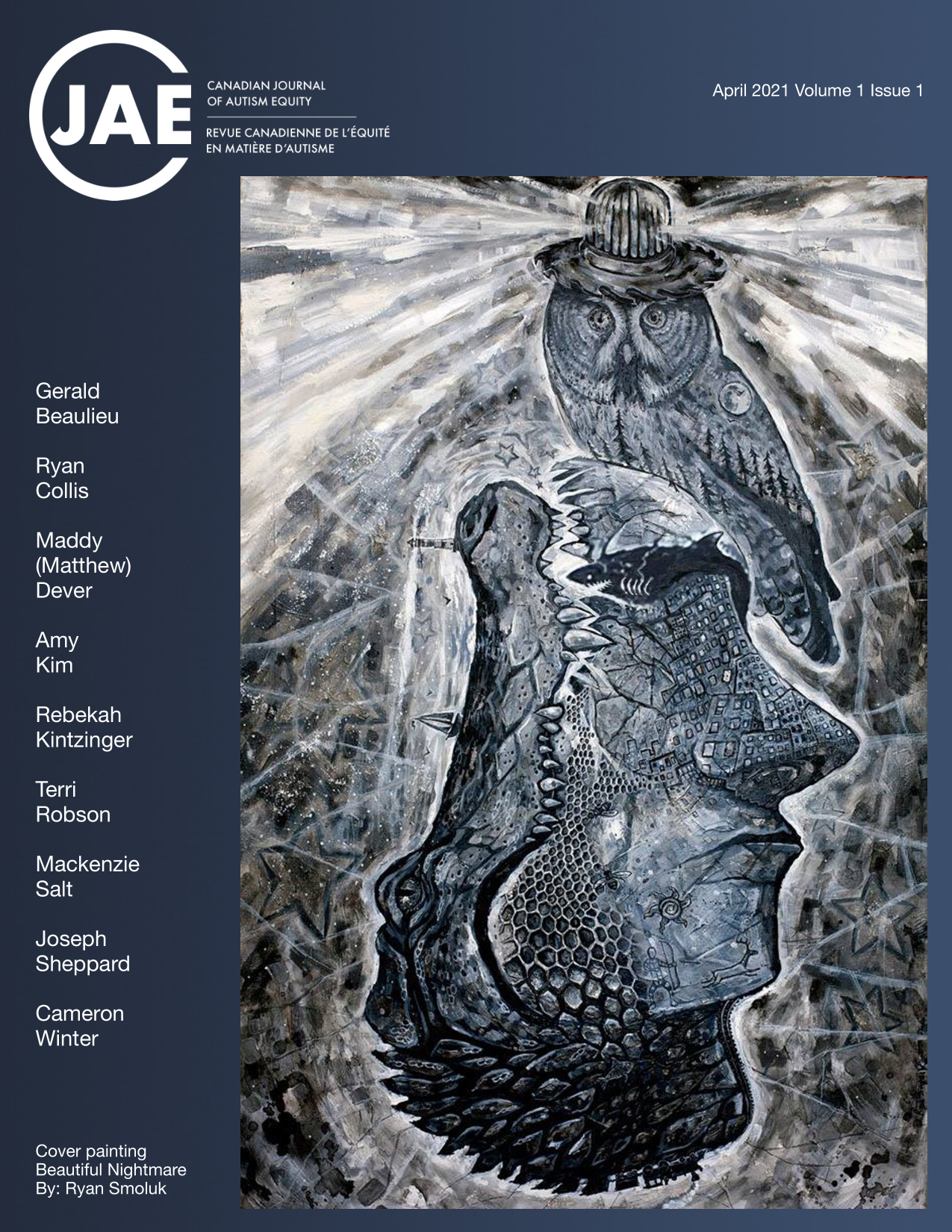Intersectionality, The Social Model of Disability, and Identity
DOI:
https://doi.org/10.15173/cjae.v1i1.4990Keywords:
Autism, Intersectionality, Disability, Identity, EquityAbstract
The introductory graphic represents the identity conflict that the author experiences daily. The terms represent labels assigned to the author in the past, the barriers that Autistic people must constantly overcome, and some of the social rules the author has very consciously and intentionally adopted to "fit in" with society. The accompanying experience piece outlines some of the difficulties the author has experienced that suggest that there needs to be more awareness in Canadian society regarding autism and intersectionality. Anecdotally, there appears to be a need for increased access to diagnostic and clinical services across Canada for women across the spectrum, and further investigation into how disability, race, and gender interact.
References
Bargiela, S., Steward, R., & Mandy, W. (2016). The experiences of late-diagnosed women with autism spectrum conditions: An investigation of the female autism phenotype. Journal of Autism and Developmental Disorders, 46(10), 3281-3294. https://doi.org/10.1007/s10803-016-2872-8
Cho, S. K. (1997). Converging stereotypes in racialized sexual harassment: Where the model minority meets Suzie Wong. Journal of Gender, Race & Justice, 1, 177-212. https://via.library.depaul.edu/lawfacpubs/710/
Lee, S. J. (2015). Unraveling the" model minority" stereotype: Listening to Asian American youth (2nd ed.). Teachers College Press.
Shakespeare, T. (2006). The social model of disability. In L. J. Davis (Ed.), The Disability Studies Reader (5th ed., pp 197-204). Taylor & Francis.
Mandy, W., Chilvers, R., Chowdhury, U., Salter, G., Seigal, A., & Skuse, D. (2012). Sex differences in autism spectrum disorder: Evidence from a large sample of children and adolescents. Journal of Autism and Developmental Disorders, 42, 1304–1313.
Downloads
Published
How to Cite
Issue
Section
License
Copyright (c) 2021 Amy Kim

This work is licensed under a Creative Commons Attribution-NonCommercial-ShareAlike 4.0 International License.
Authors retain copyright and grant the journal the right of first publication with the work simultaneously licensed under a Creative Commons Attribution License that allows others to share the work with an acknowledgement of the work's authorship and initial publication in this journal.
Authors are able to enter into separate, additional contractual arrangements for the non-exclusive distribution of the journal's published version of the work (e.g., post it to an institutional repository or publish it in a book), with an acknowledgement of its initial publication in this journal.
CJAE accepts articles that have not been published in any other journals/proceedings, unless copyright permission is assured, and have not been submitted for consideration to any other journals/proceedings at the time of submitting to the Canadian Journal of Autism Equity for consideration. While a paper is under consideration by CJAE, you agree not to submit the work to other journals/proceedings until review by CJAE is completed and a decision has been rendered.



